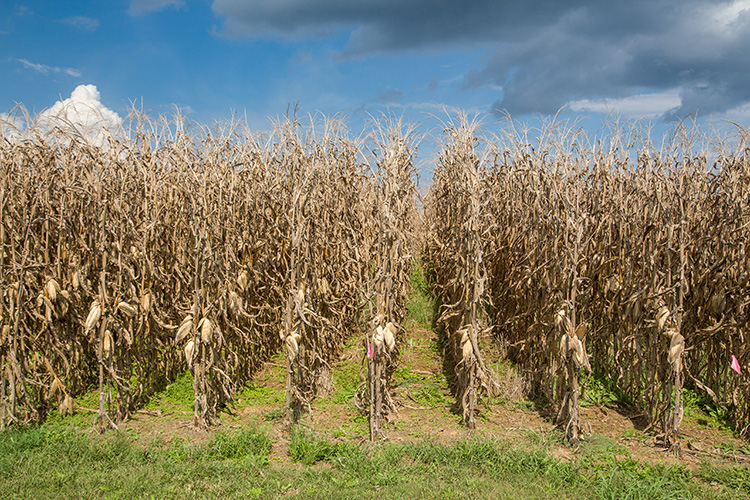Field drying could be advantageous for Kentucky corn producers in the short run
Field drying could be advantageous for Kentucky corn producers in the short run

Kentucky grain producers are expected to harvest a large corn crop this year and much of it will likely go into storage along with hopes of better marketing opportunities in the next few months. With good weather conditions predicted for the new few weeks, Kentucky producers may let their corn dry in the field a little longer before harvest as it could reduce their drying costs, said Sam McNeill, agricultural engineer with the Univeristy of Kentucky College of Agriculture, Food and Environment.
The National Agricultural Statistics Service predicts average corn yields of 181 bushels per acre in Kentucky, which is up 12 bushels per acre from the 2019 crop. Proper post-harvest processing and handing is crucial to maintaining grain quality and profits from the yield advantage.
“With tight profit margins, it’s important for producers to capitalize on cost-saving measures if they can, and field drying may provide producers with that opportunity,” McNeill said. “The next couple of weeks look good for field drying if producers can wait to harvest their corn. With a fuel costs of $1 per gallon for LP gas, field drying for an average yielding crop could save about $10 per acre for 5 points of moisture loss this year.”
While field drying seems advantageous in the short-term, it does not come without risks.
“The down side of field drying is having the crop exposed to the weather elements longer,” McNeill said. “Producers should keep a close watch on the forecast for strong winds or other adverse conditions which can result in excessive harvest losses.”
As long as the weather continues to be favorable, leaving the corn a little longer in the field should not result in significant harvest losses, McNeill said.
“We’ve done some spot checks on corn harvest losses in Kentucky the past couple of years and found them to be less than 2% as long as the weather holds,” he said.
With corn around $3.50 per bushel, the value of that loss in an average yielding field this year is $12.67 per acre. But delaying harvest too long can cause losses of 5%, which would make the value of corn left in the field $31.67 using this year’s prices. This percentage difference can pay for drying fuel plus maintenance on the dryer and labor with some left for profit.
For these reasons, McNeill said he realizes field drying is not going to work for everyone, especially those who need several weeks to complete harvest. He advises that producers only consider field drying in the short-term and that they strike a balance between harvest losses and protecting the crop’s yield and quality.
“The harvest window is only so wide, and if you have a lot of acreage to cover and adequate drying capacity, it’s usually best to start harvesting on the early side,” he said. “Also, if your crop has compromised stalks, you should go ahead and harvest as you run the risk of lodging the longer the crop stays in the field.”
McNeill suggested using UK’s decision tool to compare the costs of harvest losses and heated air drying so producers can quickly evaluate their own situation based on anticipated yield and grain and energy prices. Its available on the Department of Biosystems and Agricultural Engineering website at https://www.uky.edu/bae/grain-and-energy-calculators.
Biosystems Ag Engineering Crops Extension Weather


